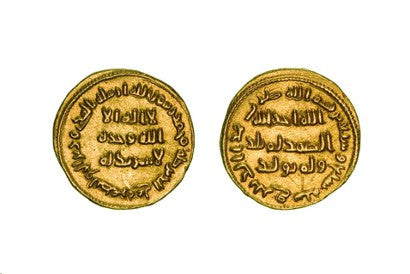London-based auction house Morton & Eden is to oversee the sale of three of the earliest and rarest Islamic gold coins on April 22.
Struck only a few decades after the death of the Prophet Muhammad (570-632), the gold coins tell the story of how the early Islamic empire grew into one of the largest and most influential the world has ever seen.
 The introduction of a unified Islamic currency is seen as a landmark in Islam's early history |
Estimated to be worth in excess of £350,000 ($527,454), the coins were struck from subtly modified dies in which the vast majority of Christian symbolism had been carefully removed.
Therefore, although the coins resemble Byzantine solidi, and bear portraits of the Christian Byzantine emperors who ruled during the early decades of the 7th century AD, these are Islamic coins, bearing inscriptions from the Holy Qur'an.
Stephen Lloyd of Morton & Eden explained that during Islam's first decades, the Muslims conquered vast areas of both the Near and Middle East.
"In places like Egypt, Syria and Jordan, people had been using Byzantine gold solidi for centuries, and there was still plenty in circulation for years after the Muslim conquests," he said.
This stock of Byzantine coins could not last forever, and Lloyd explained how the Muslims eventually had to strike more gold coins in order to replace their rapidly diminishing currency.
Instead of designing a completely new coinage, however, the Muslims simply "de-Christianised" Byzantine coins: large crosses lost the top limb, becoming T-shaped; smaller crosses, found on the emperors' crowns, were removed completely, and the chi-rho monogram made up from the first few letters of 'Christ' was subtly transformed into a letter 'P'.
"The new coins were much more acceptable to Islam, but were still similar enough to Byzantine coins that they could circulate alongside them," Lloyd concludes.
For more information on the investment potential of the market, see Paul Fraser Collectibles' free guide to investing in rare coins.






